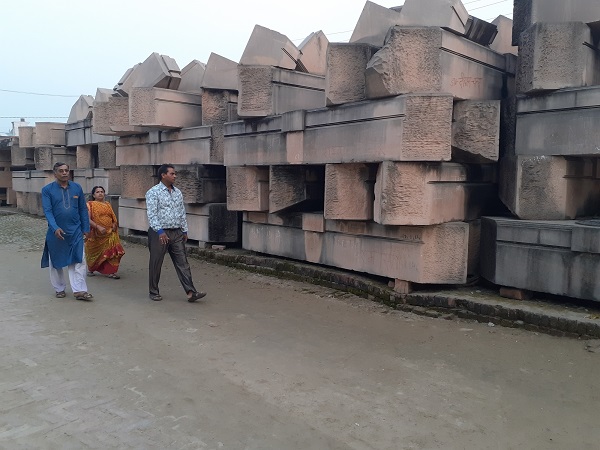It was delusory to imagine that the Ayodhya verdict would bring down the communal temperature, even though Muslims will acquiesce in the judgement after a brief sulk. Ayodhya is part of a much bigger enterprise. It is, to use my favourite image, a case of two interlocking triangles.
The caste triangle, is as old as the hills and which negotiated change across centuries at its own pace, including the phase of conversions to other faiths. The uplift of lower castes was a contentious issue throughout the national movement but a volcanic convulsion erupted only when Hindu interests saw one of their very own, V.P. Singh, subvert the caste structure by implementing the Mandal Commission Report. Western notions of democracy, social justice, upward mobility were being imposed on a uniquely unequal system.
It might have seemed revolutionary to some but it shook Hindu society to the core. The Hindu riposte was quick and powerful. V.P. Singh had introduced the Mandal report on August 1, 1990. On September 25, 1990, BJP President, L.K. Advani, embarked on his Rath Yatra from the Somnath temple in Gujarat to Ayodhya. It was a fiery expedition to mobilize public opinion for the Ram Temple “exactly” on the spot where Ram was born. Indeed, V.P. Singh’s provocation came in handy for Advani to implement the BJP’s resolution adopted at Palampur in June 1989.
In fact, Indira Gandhi began to incorporate a touch of saffron in her own politics as became clear from her campaign for Jammu election of 1983 when she pitched the campaign against minority communalism, of the Sikhs in this instance.
Even though Advani raised Ayodhya on an epic scale to neutralize V.P. Singh’s aggravation of caste, a Ram Temple in Ayodhya had been central to Hindu pride from the beginning of the Republic. The first Congress Chief Minister of Uttar Pradesh, Pandit Govind Ballabh Pant, “accepted” the installation of the Ram idol under the central dome of Babri masjid on the midnight of December 22-23, 1949. Nehru asked for the idols to be removed but Pant expressed his “inability”. Nehru did not punish Pant for his reluctance. Instead, he rewarded him. Pant became Nehru’s handpicked Union Home Minister.
When Rajiv Gandhi had the temple locks opened in 1985 to balance his capricious reversal of a Supreme Court order giving alimony to a Muslim widow, he was not acting without any precedent — his own grandfather had will nilly accepted the idol in the mosque. His promise for Ram Rajya on the eve of the 1989 elections was all part of the continuing clamour for a Ram temple. By adopting this plank, Rajiv was hoping to attract Hindu votes. The crawl towards the Congress becoming the BJP’s ideological “B” team had begun.
Does the Ayodhya verdict bring about a closure to the conflict? The way the national mood has evolved since 1947, I do not see the Sangh Parivar having completed its agenda. It can be argued that mosques in Kashi and Mathura are equally an affront to Hindu sentiment. I expect these issues coming up down the line, in due course, when required, because Hindutva has not completed its tasks yet.
What are these tasks? One is to curb the rise of caste parties which it sees as a fracture of Hindu society. Remember, the demand for the mandir entailed the removal of the mosque for which Muslims began to agitate. Spurred by clerics and lawyers, they dug their heels in. Caste leaders like Mulayam Singh Yadav spotted an opportunity: they sought to lure the Muslim away from the Congress by posing as protectors of the mosque. On October 30 and November 2, 1990, Mulayam as Uttar Pradesh Chief Minister opened fire on kar sevaks, or Hindu volunteers, who had assembled in Ayodhya in violation of government orders.
At least 16 were killed. In hindsight, the death of Hindu kar sevaks must be seen as a defining moment. Muslims embraced Mulayam. (Laloo Prasad Yadav does not quite fit in the same way because of a different social structure in Bihar.) But as the Muslim vote drifted towards caste leaders, so did Hindu consolidation receive a shot in the arm. Deepening of the saffron shade, by casting Muslims as the “other”, began to show dramatic results in consolidating Hindus. Straightening the lines of the caste triangle and Hindu consolidation are exactly the same process. Both processes are, as of now, incomplete. To that extent, the clearance of the path towards a Ram temple is only a milestone.
Narendra Modi appeared on the firmament in Gujarat, later in New Delhi, blessed by the Gods. The post 9/11 global Islamophobia, enhanced the tolerance level for an ever more stark anti-Muslim (anti minority) platform. He gave notice of his intentions in his very first speech in Parliament in May, 2014. We have to overcome “1,200 years of foreign subjugation”. As that delightful Congress leader, the late K.K. Tewari told me: “in his subconscious the Hindu nurses the belief that the Muslim rulers were foreigners.” But Modi is the first leader to say so.
By firmly opposing the two-nation theory but, paradoxically, accepting a theocratic Pakistan next door, the founding fathers muffled the allegations of “double-speak” by their iconic stature as leaders of the independence movement. The incendiary material for communalism left behind by them — Pakistan, Kashmir, Indian Muslim tied to beef, love jihad and terror (the third in the list has been accentuated recently). The triangle has to be consistently on slow fire to keep sufficient saffron in the air for the Parivar to proceed on its tasks.
Can this disharmony ever be phased out? Not by settling Ayodhya, Kashi and Mathura alone. What would be required for that epochal outcome would involve resetting the corner stone of the communal edifice relations with Pakistan. That step will open up possibilities in Kashmir and take the heat off Hindu-Muslim relations. But, then, what happens to the project of Hindu consolidation?










